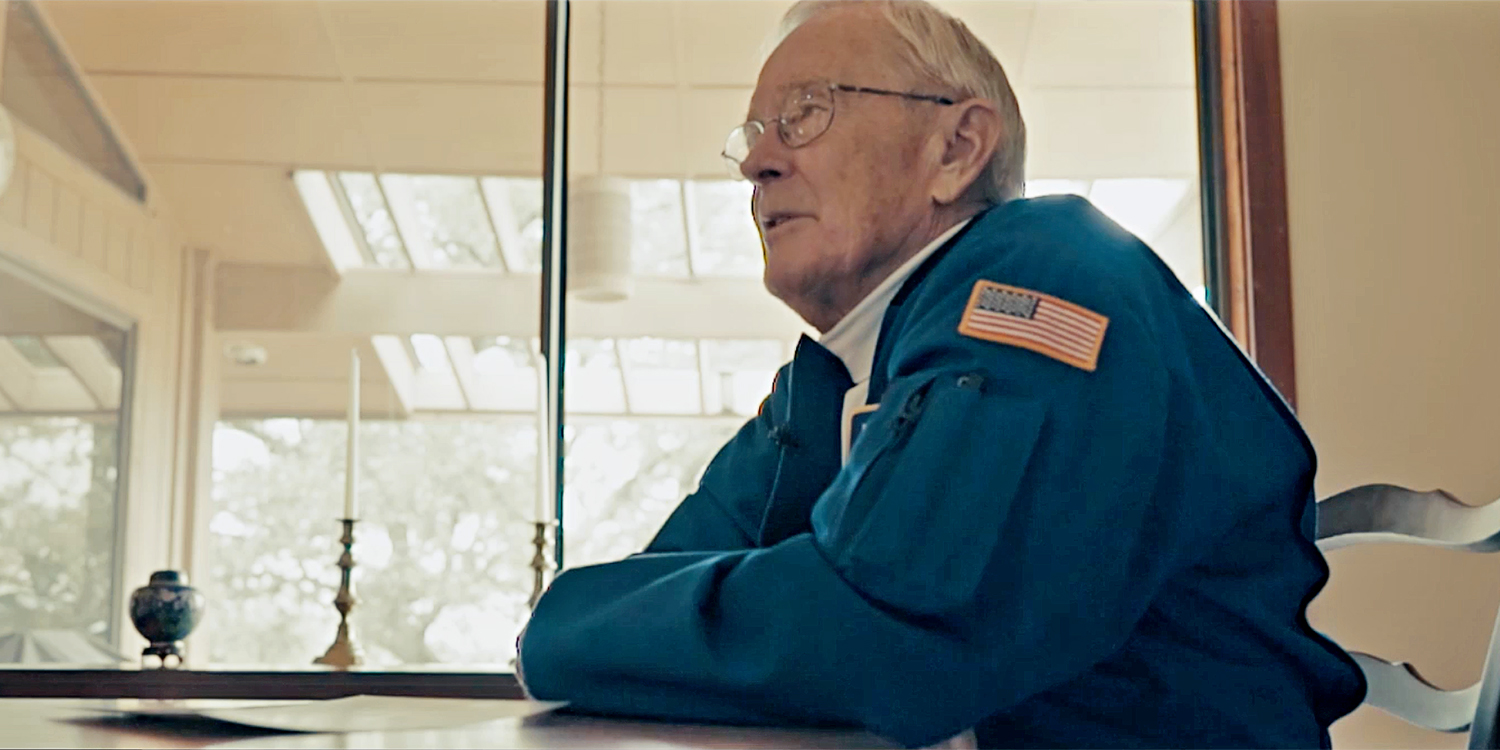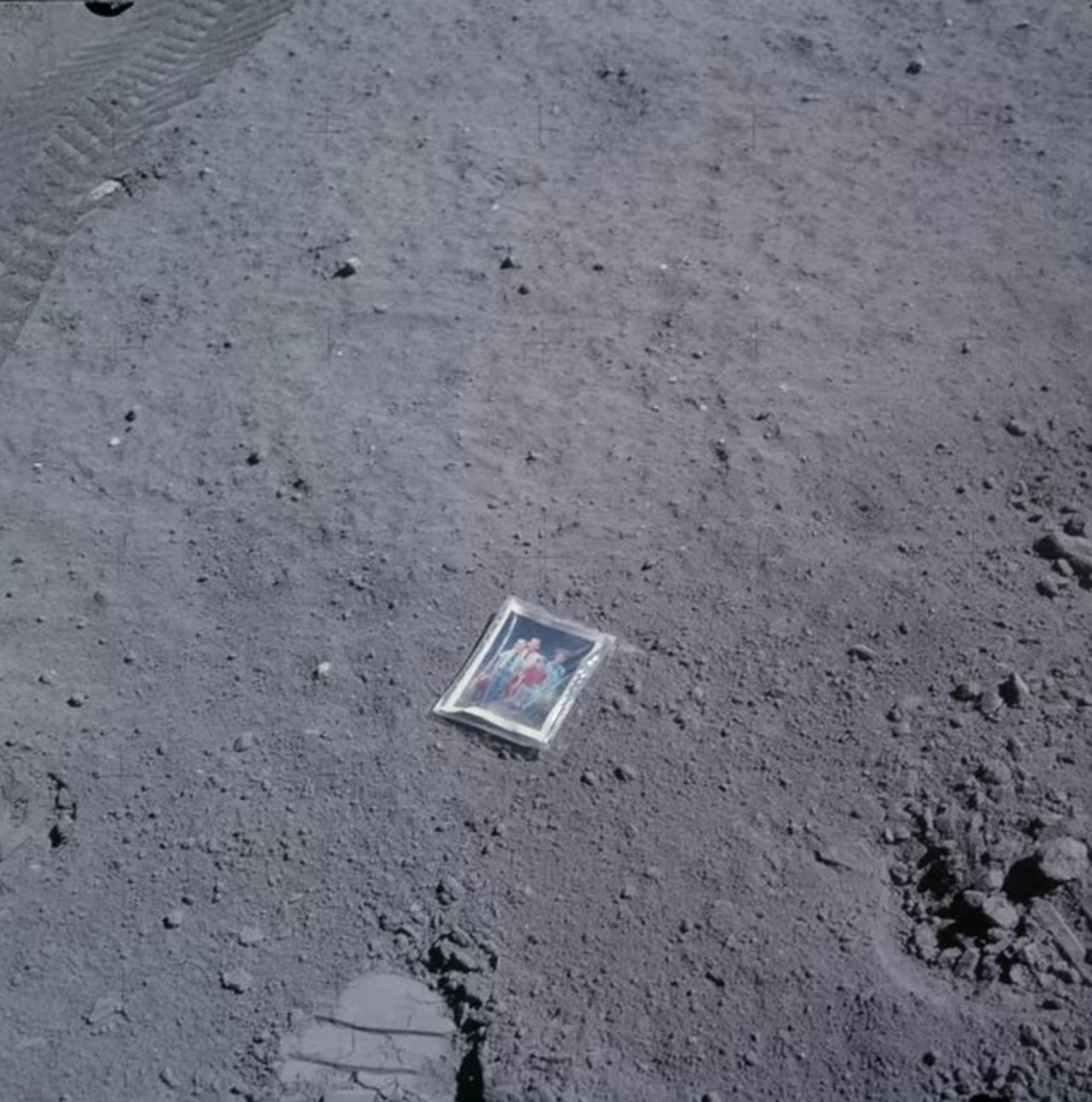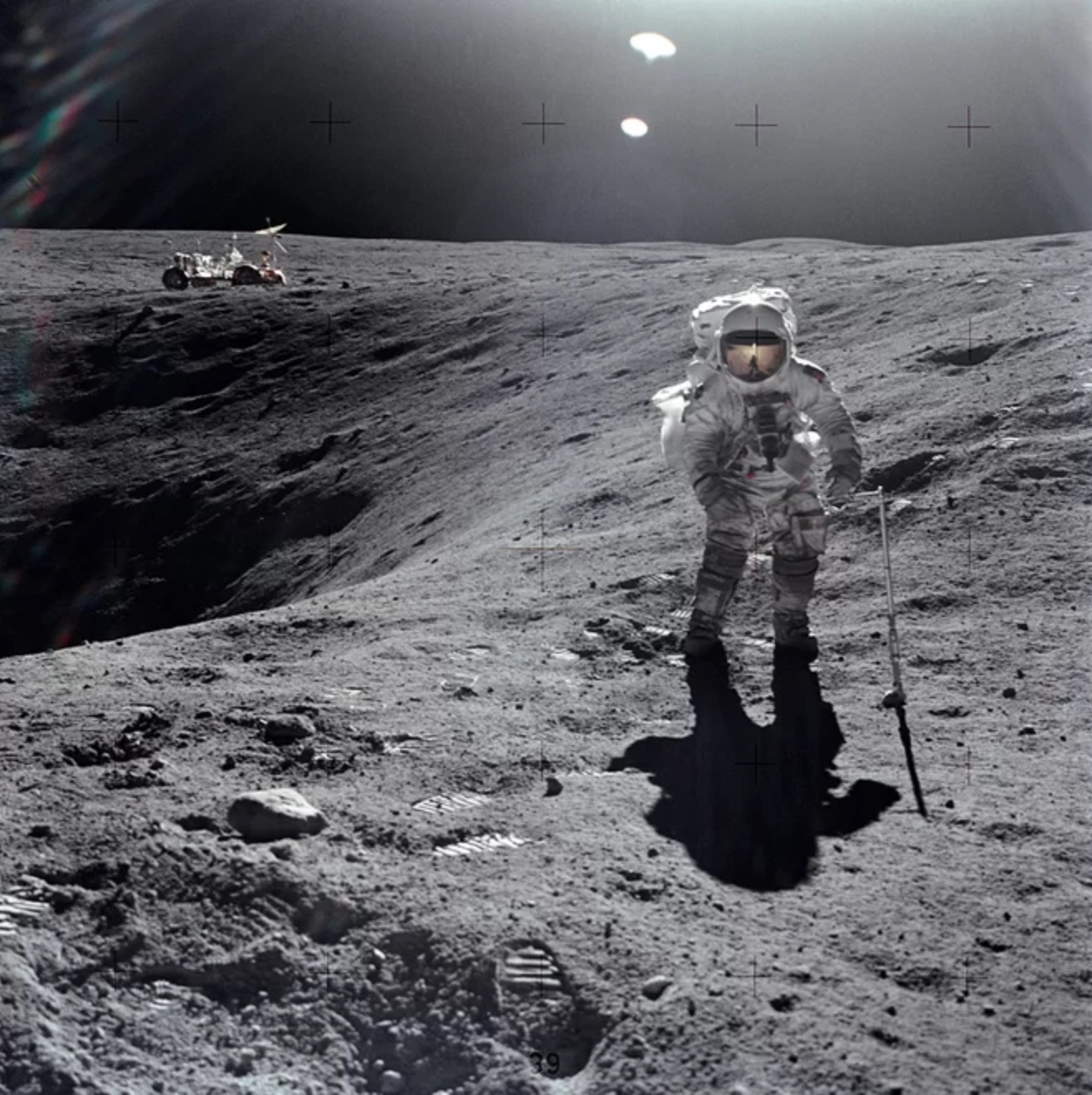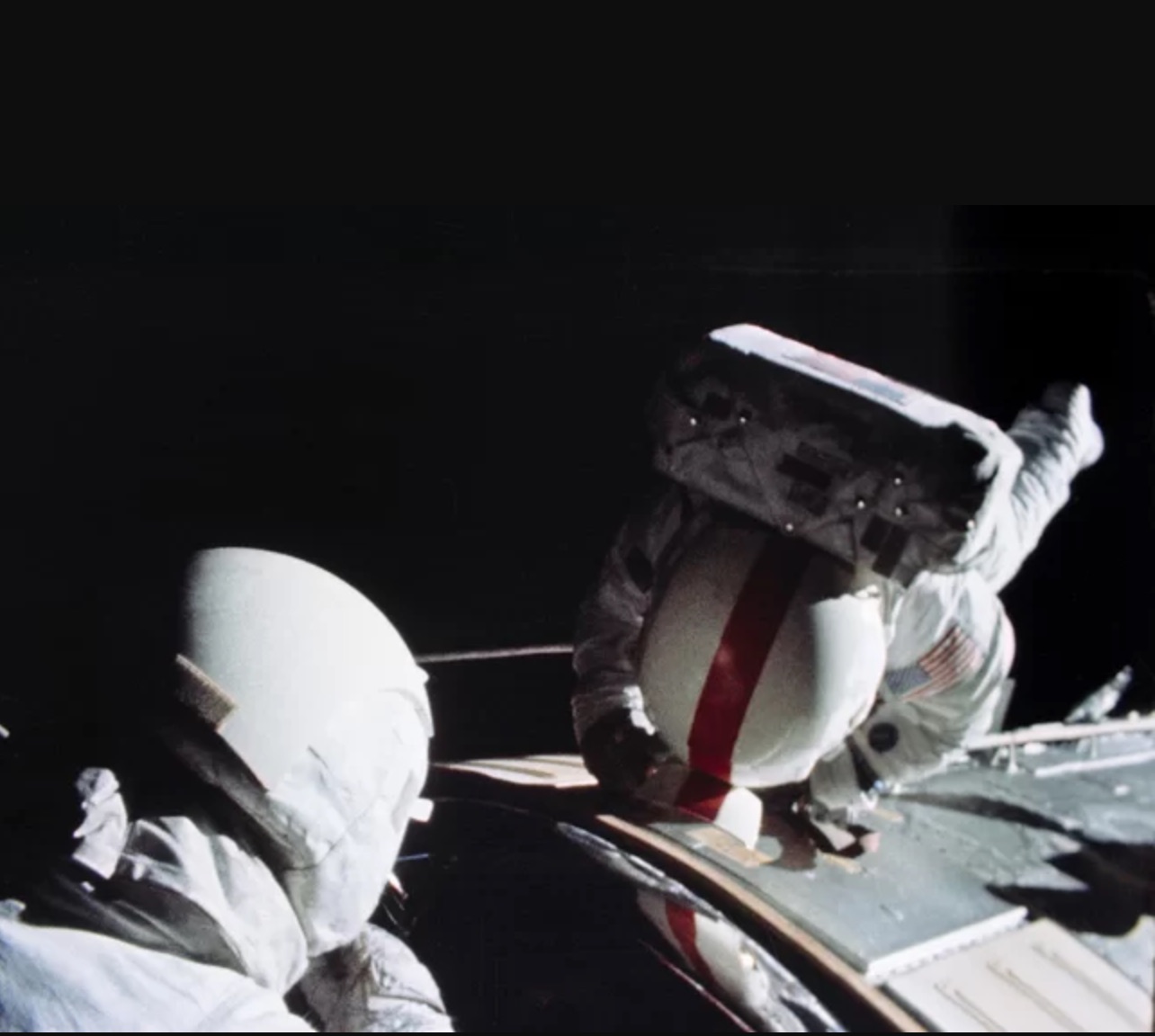New Film 'Lunar Tribute' Tells Moonwalker's Story with Drums
NEW YORK — The new documentary film "Lunar Tribute" depicts the awe and anxiety of traveling across the "velvet" blackness of space, and reveals the dedication of one astronaut to his family.
When former astronaut Charles Duke entered the auditorium at the American Museum of Natural History here last week for a screening of the new movie, the 82-year-old answered the large crowd's applause with a wave and a smile before sitting with his family, whose likeness he left on the moon's surface in 1972.
Duke, one of 12 men to ever walk on the moon, is the focus of "Lunar Tribute," which premiered on Oct. 20 as part of the museum's annual Margaret Mead Film Festival. [Apollo 16: NASA's 5th Moon Landing with Astronauts in Pictures]

The film's director, Robert Lewis, said he was inspired to make the movie by a photo of a photo: an image of a family portrait lying on the dusty and rocky regolith of the moon. Duke, once concerned that his commitments to the Apollo 16 mission were isolating his wife, Dorothy, and his two small sons, Charlie and Tom, decided to ask permission to bring a photo of the four of them and leave it on the lunar surface.
Drummer Jojo Mayer is perhaps less well-known than Duke, but his performance in "Lunar Tribute" makes him an equally compelling on-screen co-star. Lewis filmed Mayer playing bombastic, controlled drum solos to accompany the former moonwalker's testimony. The Swiss musician's dynamic stylings did as much to tell the space-travel story as Duke's words: The sounds felt like the palpitations inside the body of a space traveler, and invited the crowd to imagine the booming one could have heard from the Saturn V rocket that launched the mission as it took off on April 16, 1972, from the Kennedy Space Center in Florida.

In the film, Lewis introduces Duke in a sunny room with cream-colored walls, where Duke remains seated for the film's entire narration.
Get the Space.com Newsletter
Breaking space news, the latest updates on rocket launches, skywatching events and more!
Duke served as "Capcom" —the spacecraft radio communicator who talks to the astronauts from the ground —during the nerve-wrecking Apollo 11 mission landing. He later journeyed to the moon with commander John Young and command module pilot Thomas K. Mattingly II. During the Apollo 16 mission, Duke and Young spent more than 20 hours on the moon's surface, in the Descartes region. A bit of a filmmaker himself, Duke has said he is the only astronaut to have taken videos of the lunar rover in action.
In another space and time, Mayer is seen playing the drums as a cratered model of the moon slowly approaches him from behind, eventually resting over the musician's curly hair.
After playing measured sounds and chaotic beats soonafter to resemble a countdown clock and engines firing, Mayer silences his drum cymbals to mirror the quietness of space. Duke then speaks again, recalling his views of Africa, the Indian Ocean and Australia from the space vehicle 3 minutes after launch.
Duke describes the "pure white" of snow and "crystal blue" of Earth's oceans, but the sensations weren't all pleasant.
"At first, I felt like I was going to throw up," Duke said as he described being in microgravity. "It's a seasick feeling," which Duke then added he eventually got used to.
Some of Duke's most memorable words from the film were about the photograph he had in his spacesuit pocket.
"Tom was just learning how to write, so he just put T.O.M.," Duke said of his youngest son's signature on the back of the photograph. On-camera, Duke stares at a copy of the original photo, pauses, and says, "[The kids] came out all right," before getting choked up. At the film's end, a dedication is made out to Ludy Benjamin, who took the famous photo.
Duke's words on the nature of light and darkness in space are also compelling. He describes the "velvety blackness" of space as he narrates the journey between the moon and Earth, adding , "You feel like you can reach out and touch it."
He expresses a paradox about being in sunlight in space:"[It's] like you're at the beach," but all Duke saw was blackness. He did not see bright stars until the vehicle orbited the moon over its far side, which felt "eerie" since it was all dark and no one could see the "the heavenly body" they were orbiting.

The drums kick in as Duke describes what he called the "fireball all around" Apollo 16's reentry into Earth's atmosphere. The film closes with words on his family's reunion and an overshot of Duke placing photo after photo of the mission down onto a wooden table.
Duke, Lewis and Mayer were joined at the screening by the director of the museum's Hayden Planetarium, Neil deGrasse Tyson, during a panel following the film.
Tyson said "Lunar Tribute" is an atypical kind of Apollo film, and that Mayer "and the moon were jamming together." The drummer said that the project was a welcome challenge, as he felt he had "to creep into the emotional experience of someone else."
Eventually, Tyson mentioned that Duke was the youngest astronaut to have walked on the moon, Duke rebutted Tyson, saying the astrophysicist's comment isn't just true in the past sense. "I'm 82, but I'm still the youngest."

Follow Doris Elin Salazar on Twitter @salazar_elin. Follow us@Spacedotcom, Facebook and Google+. Original article on Space.com.
Join our Space Forums to keep talking space on the latest missions, night sky and more! And if you have a news tip, correction or comment, let us know at: community@space.com.

Doris is a science journalist and Space.com contributor. She received a B.A. in Sociology and Communications at Fordham University in New York City. Her first work was published in collaboration with London Mining Network, where her love of science writing was born. Her passion for astronomy started as a kid when she helped her sister build a model solar system in the Bronx. She got her first shot at astronomy writing as a Space.com editorial intern and continues to write about all things cosmic for the website. Doris has also written about microscopic plant life for Scientific American’s website and about whale calls for their print magazine. She has also written about ancient humans for Inverse, with stories ranging from how to recreate Pompeii’s cuisine to how to map the Polynesian expansion through genomics. She currently shares her home with two rabbits. Follow her on twitter at @salazar_elin.









